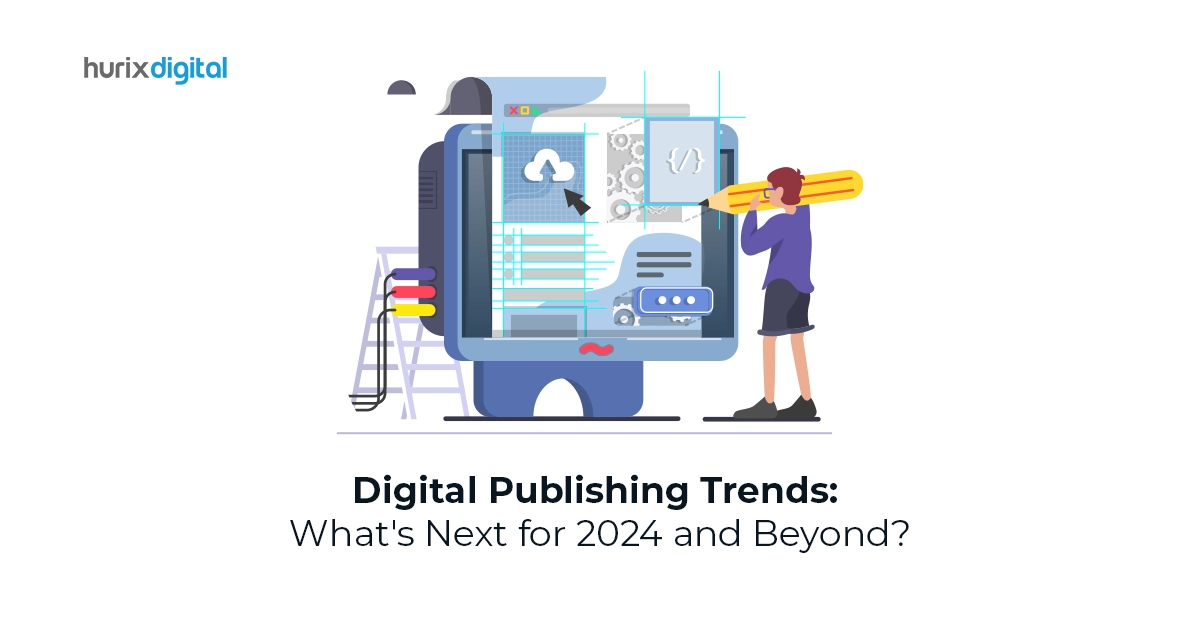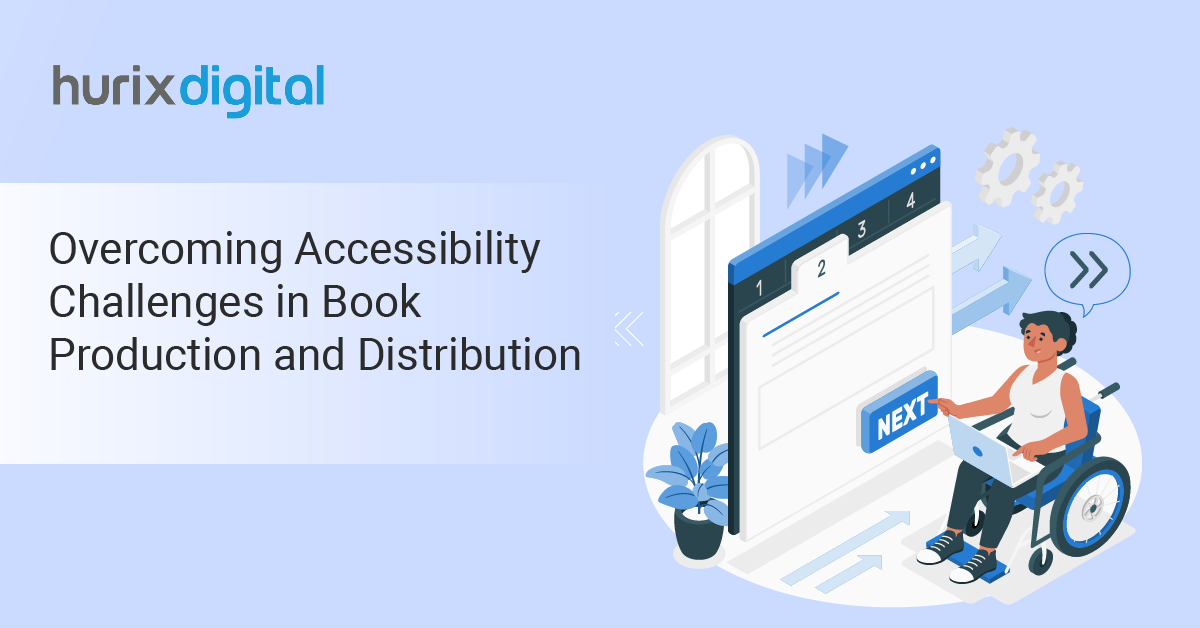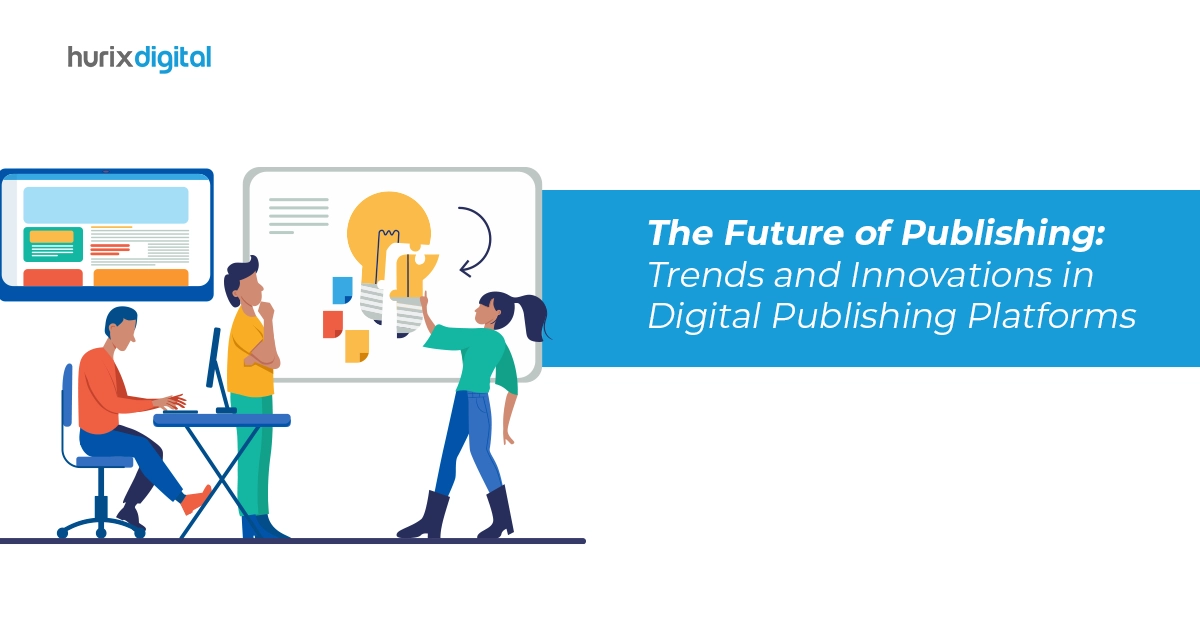
Digital Publishing Trends: What’s Next for 2024 and Beyond?
Summary
Explore current and future trends in digital publishing. This blog provides insights into emerging developments and their impact on the industry.
The publishing world mirrors the constant evolution of the digital world. As we stand at the precipice of 2024, a year brimming with possibilities, one thing is certain: the industry’s adaptability and innovation will be put to the test once again.
Despite a consistent revenue stream of approximately $28 billion annually in the US alone, the digital publishing sector refuses to rest on its laurels. Recent years have borne witness to notable transformations, hinting at an ongoing trajectory that will continually challenge the industry’s limits.
Emerging formats, cutting-edge technologies, and novel monetization strategies signal a landscape ripe for profound change. Read on as we explore the major trends redefining the future of digital publishing in 2024.
Table of Contents:
7 Emerging Trends in the Digital Publishing Industry
While 2023 saw the initial exploration of AI, its practical applications remain in their infancy. However, 2024 promises to be a turning point.
Here are the top trends that are shaping the digital publishing landscape in 2024 and beyond:
1. Audio and eBooks Consumption
Traditional print media faces a growing competitor: digital formats. The demand for eBooks and audiobooks has surged in recent years.
This trend aligns with consistent industry reports, with audiobook sales witnessing a remarkable 14.3% year-over-year growth. Interestingly, eBooks are leading the charge, generating over $956 million in revenue, driven largely by Amazon’s Kindle platform. This rise presents a unique opportunity for authors and publishers, particularly independent creators.
Technological advancements have streamlined the creation and distribution of digital books, making the market more accessible than ever.
Other than convenience, the prevalence of enhanced eBooks incorporating audio, video, and interactive elements creates an immersive reading experience. It caters to the growing demand for diverse interactive content formats, particularly among tech-savvy readers.
2. Voice Search Ascendance
Gone are the days of meticulously typing queries; today’s users seek information hands-free, uttering natural language questions to their digital assistants like Alexa, Siri, and Google Assistant. This trend signifies a crucial emerging trend in digital publishing: the need for Voice Search Optimization (VSO).
Essentially, your content should conversationally deliver succinct, coherent responses. It ensures its resonance with both search engines and users, establishing your brand as a reliable authority in the era of voice-activated exploration.
Check out EXCLUSIVE: Hurix Mini-Book: PrePress Tips You Won’t Find Anywhere Else
3. Subscription-Based Models
The dynamic digital landscape demands agility, and publishers are adapting to this by diversifying their revenue streams. They are exploring innovative avenues to secure financial stability, moving beyond the traditional ad and subscription-based models.
This new approach takes shape in various forms: sponsored content partnerships, where brands collaborate on relevant content, or affiliate marketing, where publishers earn commissions by promoting products or services.
Hosting events or launching online courses offer direct engagement opportunities with readers. It establishes a deeper connection and the potential for additional revenue. Publishers are re-evaluating their existing models, seeking to personalize and cater to user preferences.
Micropayments, for instance, are gaining traction, allowing readers to pay a small fee for specific articles instead of full subscription-based models, offering greater flexibility and catering to diverse consumption patterns.
4. Cross-Platform Distribution
The digital publishing landscape is no longer confined to the pages of PDFs and ePub formats. Today’s readers are increasingly mobile and platform-agnostic. Their preference for content that seamlessly adapts to their preferred devices and formats has given rise to a crucial emerging trend: cross-platform distribution.
Since a single format no longer suffices, publishers are recognizing the need to make their content omnipresent and readily available across e-readers, tablets, smartphones, and web browsers. Simply publishing across multiple platforms is not enough.
Multi-platform marketing goes hand in hand with cross-platform distribution. Digital publishing businesses can effectively reach readers through diverse channels like emails, social media, and targeted advertising. Gathering and analyzing customer data across these platforms provides invaluable insights, allowing publishers to modify their content and marketing strategies to ensure their message hits the right mark.
5. Responsive Design
Readers in the multi-screen world expect seamless access to content on any device, from desktops to smartphones. This has pushed responsive design to the forefront of digital publishing trends.
Neglecting responsiveness in design risks alienating readers and restricting accessibility. While traditional CSS techniques enabled responsive layouts, they often came with limitations.
Predefined templates could curb creative freedom and hinder customization. Today, however, responsive design has evolved, offering greater flexibility without sacrificing functionality. Modern solutions allow publishers to maintain their corporate identity while delivering a superior user experience.
6. AI-Powered Personalization
AI algorithms can curate personalized content journeys, recommend relevant articles, and even optimize news feeds to individual preferences and behaviors by leveraging vast user data.
These valuable insights into reader preferences enable publishers to refine their digital publications and marketing strategies. This understanding encourages reader engagement and brand loyalty. Moreover, aligning offerings with audience desires allows publishers to build a loyal readership that advocates for their service.
AI personalization is a win-win. Readers find content that speaks directly to their interests, encouraging repeat visits. Publishers, in turn, benefit from increased engagement and a powerful brand reputation, solidifying their competitive edge. This personalized touch enables a sense of connection, turning a passive reader consuming information into an actively engaged participant in the narrative.
7. Podcast
A podcast extends creative possibilities, enabling publishers to build genuine rapport with their audience. Additionally, audio aligns with popular content consumption trends, catering to listeners on the go who seek a break from visually demanding formats, making podcasts ideal for busy lifestyles.
With audio surfacing as a powerful tool for engagement and information dissemination, the podcast trend signifies a shift towards multi-sensory experiences in publishing. As the demand for convenient and interactive content grows, podcasts are inevitably going to become a key player in the digital publishing industry.
Also Read: Five Common Prepress Mistakes and How to Avoid Them?
Final Words
While the fast-evolving technologies in the digital realm defy definitive predictions, we can familiarize ourselves with the knowledge of emerging trends to address the future with informed optimism.
Acknowledging the ongoing disruption and actively seeking knowledge about upcoming trends allows publishers to chart their course through this transformative era.
At Hurix Digital, we understand that today’s readers demand immersive, interactive content that rises above the static page. That is why we offer a one-stop solution for end-to-end digital publishing designed to increase engagement, reach new audiences, and future-proof your publishing journey.
Connect with us for more details!

Vice President – Digital Content Transformation. He is PMP, CSM, and CPACC certified and has 20+ years of experience in Project Management, Delivery Management, and managing the Offshore Development Centre (ODC).







